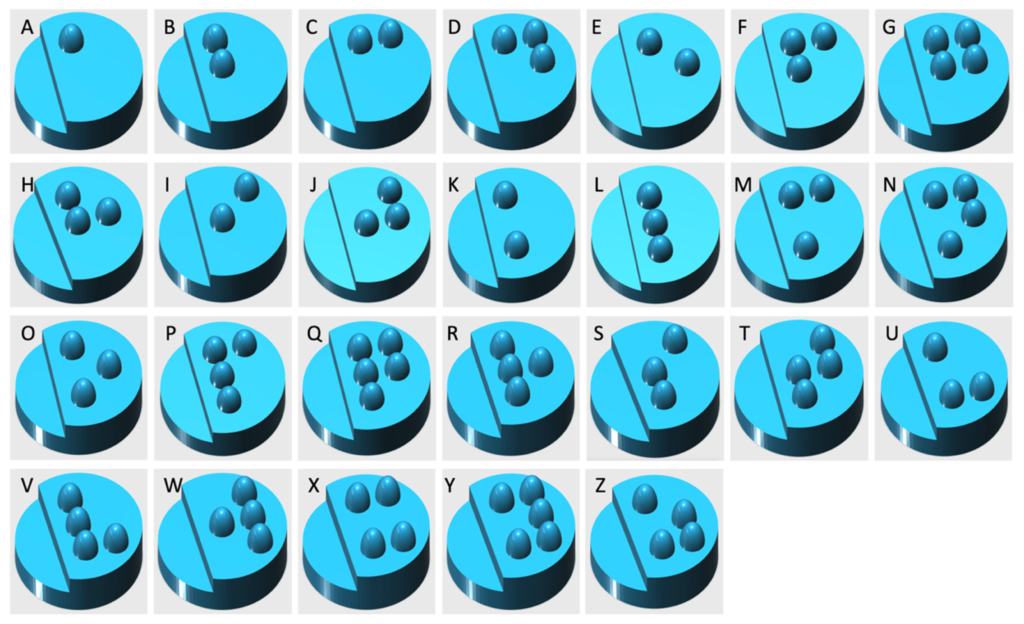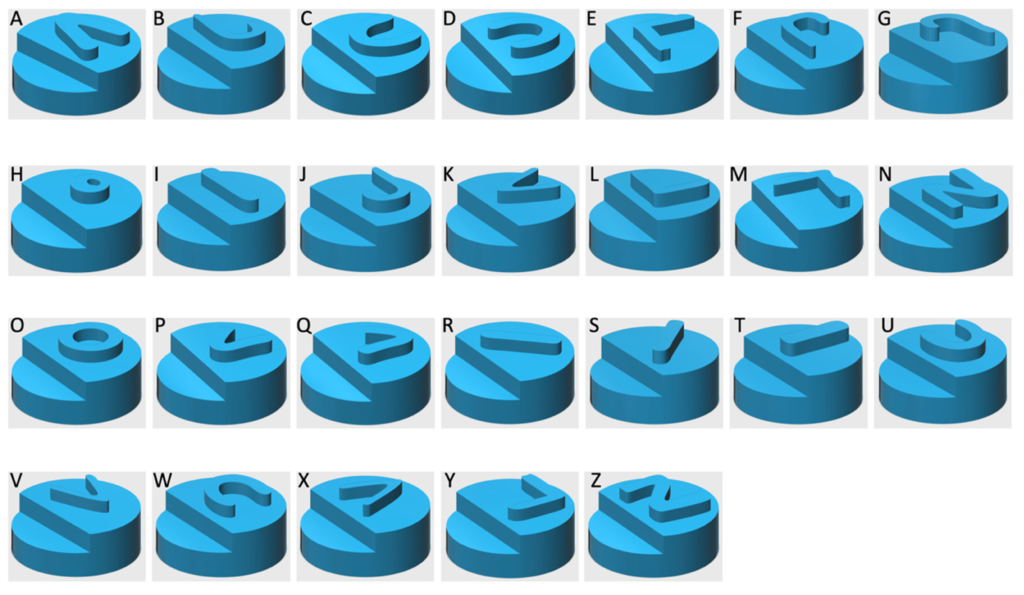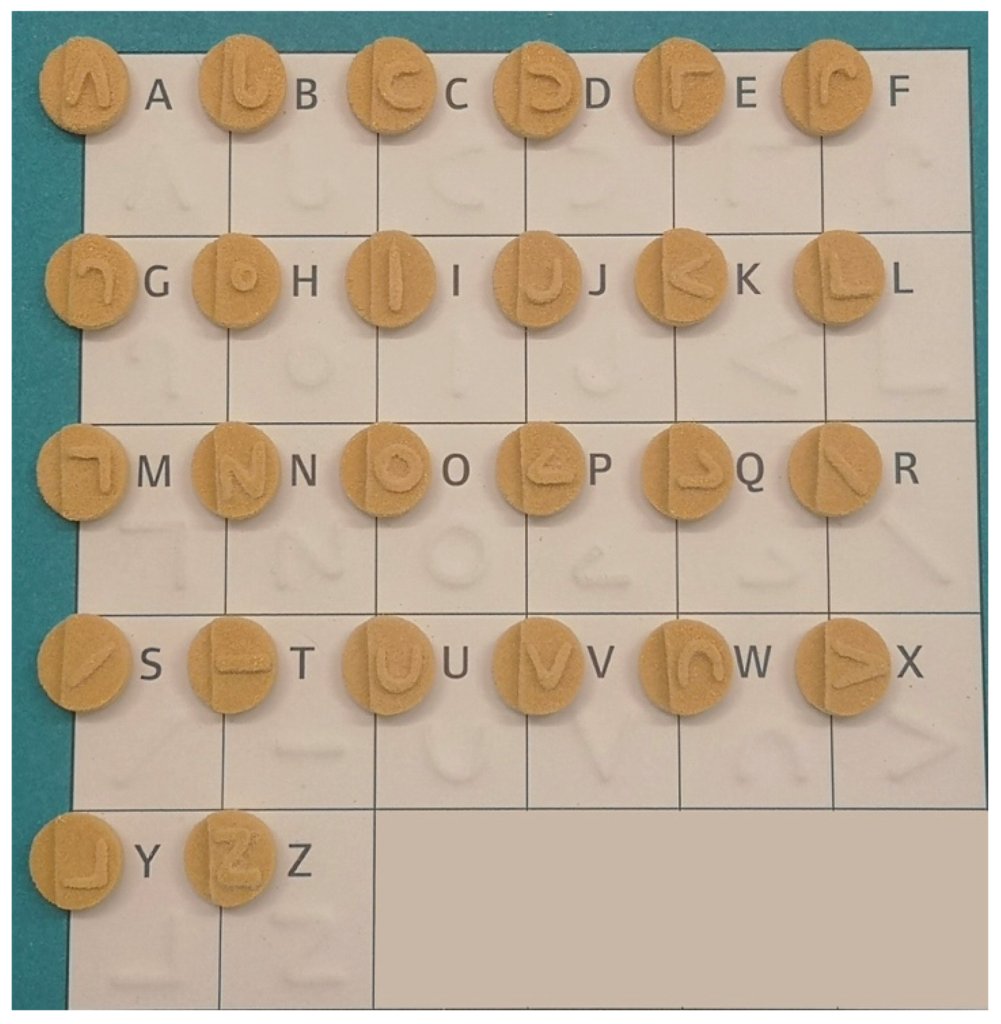3D Printed Tablets Topped with Braille & Moon Patterns Help Visually Impaired Improve in Taking Medication
Researchers from the UK and Spain continue to study the potential to use 3D printing to transform pharmaceuticals, outlining their studies in the recently published ‘3D Printed Tablets (Printlets) with Braille and Moon Patterns for Visually Impaired Patients.’
3D printed medication is an ongoing focus for scientists and manufacturers today, eager to put all the benefits of progressive technology to use. And while the use of Braille with printlets is a novel idea, it fits in perfectly with the idea of patient-specific treatment—meant to prevent dosage errors and encourage the visually impaired to keep up with their medication.
Stating that data shows there are around 285 visually impaired individuals worldwide, the researchers offer their motivation for helping the blind, most of whom are over 50 and relying on medication.
“Previous studies revealed that one of the leading causes of medication non-adherence was impaired vision, wherein approximately 97% of patients with visual impairment have difficulties reading medication labels, even in the presence of optical aids, and around 24% have difficulties in distinguishing medications,” stated the researchers. “Moreover, patients with visual impairment are twice more likely to need assistance with medicine management, wherein one-third of the patients will require continual support for medication administration.”
While Braille is ‘the universal tactile writing system,’ the Moon system stems from Latin Roman letters produced using raised shapes—much like the regular alphabet in structure. The researchers decided to print these writing systems directly onto the printlets.
SLS 3D printing was used to fabricate the orally disintegrating printlets (ODPs) with Braille and Moon patterns, allowing patients to have fast knowledge regarding medication. Paracetamol was used as the model drug.
“Moreover, as these printlets are designed to disintegrate rapidly in the mouth, they do not require the co-administration of water,” said the researchers. “As such, this encourages self-administration of medicines, improving patient compliance and treatment efficacy.”
In using an SLS 3D printer to etch the patterns into the printlets, the researchers noted that the exercise of doing so actually added weight to the printlets; in fact, just one Braille dot added a 3.8 percent increase in weight, while the Moon patterns added an increase of 4.9 percent. The patterns were, however, still visible as they allowed for tactile recognition.
As mechanical properties were evaluated, the researchers noted that in adding the patterns, the printlets were not affected.

Mechanical properties and disintegration times of the printlets with or without the addition of the Braille patterns.
Disintegration properties were not notably affected, and neither were release rates of drugs.
“Favorably, this technology offers the added benefit of using different shapes that could be inferred to a medication’s name, timing of intake (e.g., morning/evening), or its targeted indication (e.g., cardiovascular drugs),” concluded the researchers. “More importantly, as the pattern is directly printed on top of the tablet, the medication could be easily identified even when taken out of the packaging. This decreases the risk of medication errors and improves adherence to treatment. In addition, as these printlets disintegrate rapidly (e.g., within ~5 s), they avoid the need for water. This makes it easier for these patients to swallow the formulations, supporting self-administration and thus avoiding the need of a career.
“For the first time, this study demonstrates the use of 3D printing to fabricate personalized dosage forms targeted to blind or visually impaired individuals. The SLS 3D printing technique could be used to manufacture printlets with Braille or Moon patterns on their surface that could be read by blind individuals. It is likely that this innovative concept will provide a revolutionary approach for the treatment of visually impaired individuals, improving independence, medicine adherence and reducing medicine errors.”
Slowly, pharmaceuticals are being impacted by 3D printing, especially due to projects yielding promise for accelerated drug delivery, multi-drug release, 3D printing on the micro scale, and more. What do you think of this news? Let us know your thoughts; join the discussion of this and other 3D printing topics at 3DPrintBoard.com.
[Source / Images: ‘3D Printed Tablets (Printlets) with Braille and Moon Patterns for Visually Impaired Patients’]Subscribe to Our Email Newsletter
Stay up-to-date on all the latest news from the 3D printing industry and receive information and offers from third party vendors.
You May Also Like
Nylon 3D Printed Parts Made More Functional with Coatings & Colors
Parts 3D printed from polyamide (PA, Nylon) 12 using powder bed fusion (PBF) are a mainstay in the additive manufacturing (AM) industry. While post-finishing processes have improved the porosity of...
3DPOD Episode 193: Flow and What’s Possible in 3D Printing with Ricky Wildman, University of Nottingham
Ricky Wildman is working on 3D printing pills, but, as Professor of Multiphase Flow and Physics at Nottingham, he does a whole lot more. His research encompasses the characterization of...
3D Printing Webinar and Event Roundup: March 17, 2024
It’s another busy week of webinars and events, including SALMED 2024 and AM Forum in Berlin. Stratasys continues its in-person training and is offering two webinars, ASTM is holding a...
3D Printed Micro Antenna is 15% Smaller and 6X Lighter
Horizon Microtechnologies has achieved success in creating a high-frequency D-Band horn antenna through micro 3D printing. However, this achievement did not rely solely on 3D printing; it involved a combination...


































